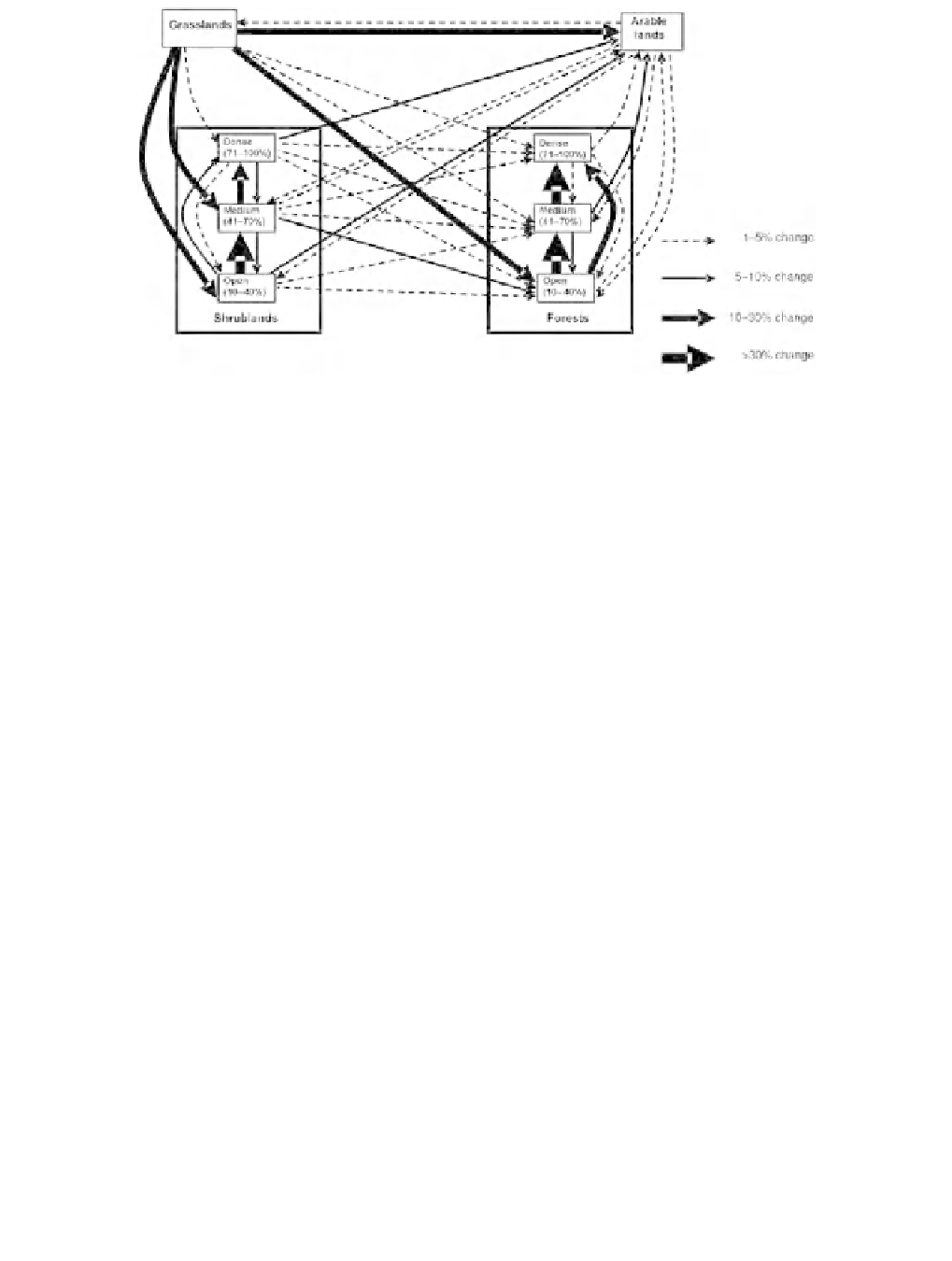Environmental Engineering Reference
In-Depth Information
Figure 8.8
Multidirectional changes of land cover/use types between 1960 and 1993 in the
Vertiskos mountain of northern Greece. Reproduced from Papanastasis and Chouvardas (2005),
with permisson
or annual crops (cereals) may be directly colonized by pine trees without going first
to grassland and then to shrubland (phrygana or maquis) (Bankov, 1998). Similar
results were found in the southern French Alps, where the vegetation patterns of the
European beach (
Fagus silvatica
) and silver fir (
Abies alba
) in the understorey of
Scots pine (
Pinus silvestris
) after land abandonment were largely altered by grazing
history, suggesting that agricultural land use and abandonment are both significant
driving forces of vegetation dynamics (Chauchard
et al.,
2007). The multiple path-
ways of land use changes are clearly shown in Figure 8.8 based on a study carried
out in the Vertiskos mountain of northern Greece.
8.5.3 Environmental consequences of land use changes
Land use changes have several environmental impacts. One such impact is on land-
scapes. In the past, Mediterranean mountain landscapes, although shaped by hu-
man activities, had achieved an agro-silvo-pastoral equilibrium that helped serve
both human needs and environmental conservation. This traditional equilibrium
has been altered or disrupted in several Mediterranean mountain regions due to
land use changes. In Alvao Natural Park of northern Portugal, for example, the
landscape became more heterogeneous between 1947 and 1978 due to reforestation
with conifers and deciduous trees, which led to an increase in the number of patches
and diversity of the landscape. This diversity was further improved by wildfires
and excessive livestock grazing leading to a new equilibrium with 60% of the area
consisting of rangelands, 20% barren land and the remaining 20% forests and agri-
cultural areas (Timoteo
et al.,
2004). Increased landscape fragmentation was also

